Blog Archives
Causes and Treatment of Foot Pain
 It’s common to have pain in your feet after standing all day. By eliminating foot discomfort, your muscles will be more relaxed. While standing on concrete, your legs will feel more uncomfortable than if you were to stand on soft carpet. Aches and pain in the feet should not be ignored, as this may a sign of potentially serious foot conditions. There are a few causes of sore feet, a common one being not enough support in the shoes. Another cause may be ill-fitting shoes that are too small. To avoid pain in the foot, shoes should be supportive and comfortable. Making sure to stretch the feet can also be a great way to mitigate pain from prolonged standing. Getting a regular foot massage may also help. The benefits of a massage can include boosting energy levels in addition to alleviating foot pain. However, a foot massage is only a temporary solution. If you feel constant pain in your feet, it is recommended that you see a podiatrist.
It’s common to have pain in your feet after standing all day. By eliminating foot discomfort, your muscles will be more relaxed. While standing on concrete, your legs will feel more uncomfortable than if you were to stand on soft carpet. Aches and pain in the feet should not be ignored, as this may a sign of potentially serious foot conditions. There are a few causes of sore feet, a common one being not enough support in the shoes. Another cause may be ill-fitting shoes that are too small. To avoid pain in the foot, shoes should be supportive and comfortable. Making sure to stretch the feet can also be a great way to mitigate pain from prolonged standing. Getting a regular foot massage may also help. The benefits of a massage can include boosting energy levels in addition to alleviating foot pain. However, a foot massage is only a temporary solution. If you feel constant pain in your feet, it is recommended that you see a podiatrist.
While working on the feet, it is important to take the proper care of them. For more information about working on your feet, contact Dr. Sharon Pletcher from Pennsylvania. Our doctor will treat your foot and ankle needs.
Working on Your Feet
Standing on your feet for long periods of time can cause stress and pain in your feet. Your whole body may experience change in terms of posture, back pain, bunions, callouses and or plantar warts. There are ways to avoid these conditions with proper foot care, smart choices and correct posture.
Positive Changes
Negative heeled shoe – Choosing this shoe type places the heel slightly lower than the ball of the foot. These are great for overall foot health. Find shoes that fit you correctly.
Go barefoot – Our feet were not designed to be enclosed for all hours of the day. Try to periodically expose your feet to air.
Eliminate Pain
Foot Exercises – Performing simple exercises, incorporating yoga and doing stretches are beneficial. This will allow increased blood flow to the area and muscles of the foot.
Achilles tendon – Stretching the foot out flat on the floor will relax the calf muscles and tendon. These exercises can be performed almost anywhere. Make sure you add these exercises to your daily regimen.
With a little bit of this information and knowing more about foot health, you will notice changes. Foot stretches and proper footwear will help with pain and prevent further issues.
If you have any questions please feel free to contact our office located in State College, PA. We offer the newest diagnostic and treatment technologies for all your foot and ankle needs.
Read more about Working on Your FeetAvoiding Foot Conditions While Wearing High Heels
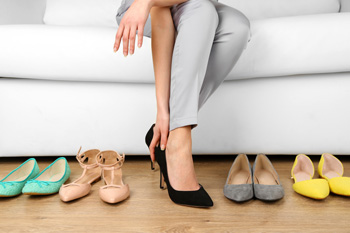 High heels have been scrutinized by podiatrists in recent years due to the foot conditions they can cause or exacerbate. Some of these conditions include hammertoes, corns, calluses, Morton’s neuroma, plantar fasciitis, and bunions. If you do decide to wear high heels, it is recommended to only wear them for short periods of time or for special events. Stretching your foot out afterwards and using ice can help reduce pain and inflammation. Avoid very high heels, heels that are extraordinarily skinny, and high heeled shoes that are tight around the toes.
High heels have been scrutinized by podiatrists in recent years due to the foot conditions they can cause or exacerbate. Some of these conditions include hammertoes, corns, calluses, Morton’s neuroma, plantar fasciitis, and bunions. If you do decide to wear high heels, it is recommended to only wear them for short periods of time or for special events. Stretching your foot out afterwards and using ice can help reduce pain and inflammation. Avoid very high heels, heels that are extraordinarily skinny, and high heeled shoes that are tight around the toes.
High heels have a history of causing foot and ankle problems. If you have any concerns about your feet or ankles, contact Dr. Sharon Pletcher from Pennsylvania. Our doctor can provide the care you need to keep you pain-free and on your feet.
Effects of High Heels on the Feet
High heels are popular shoes among women because of their many styles and societal appeal. Despite this, high heels can still cause many health problems if worn too frequently.
Which Parts of My Body Will Be Affected by High Heels?
- Ankle Joints
- Achilles Tendon – May shorten and stiffen with prolonged wear
- Balls of the Feet
- Knees – Heels cause the knees to bend constantly, creating stress on them
- Back – They decrease the spine’s ability to absorb shock, which may lead to back pain. The vertebrae of the lower back may compress.
What Kinds of Foot Problems Can Develop from Wearing High Heels?
- Corns
- Calluses
- Hammertoe
- Bunions
- Morton’s Neuroma
- Plantar Fasciitis
How Can I Still Wear High Heels and Maintain Foot Health?
If you want to wear high heeled shoes, make sure that you are not wearing them every day, as this will help prevent long term physical problems. Try wearing thicker heels as opposed to stilettos to distribute weight more evenly across the feet. Always make sure you are wearing the proper shoes for the right occasion, such as sneakers for exercising. If you walk to work, try carrying your heels with you and changing into them once you arrive at work. Adding inserts to your heels can help cushion your feet and absorb shock. Full foot inserts or metatarsal pads are available.
If you have any questions please feel free to contact our office located in State College, PA. We offer the newest diagnostic and treatment technologies for all your foot and ankle needs.
Read more about Effect of High Heels on the FeetExercise Programs and Therapy Help to Reduce Falls Among the Elderly
 Researchers have recently examined data and found that elderly persons who engaged in exercise programs were 49 percent less likely to have an injury caused by a fall. In addition to this impressive result, those who partook in exercise programs and vision exams had 83 percent lower odds of an injury resulting from a fall. Those who took vitamin supplements and had geriatric assessments in addition to exercise programs and vision exams had 88 percent lower odds. This data helps to show that not only did these steps help prevent falls, they also reduced the impact of an injury from a fall.
Researchers have recently examined data and found that elderly persons who engaged in exercise programs were 49 percent less likely to have an injury caused by a fall. In addition to this impressive result, those who partook in exercise programs and vision exams had 83 percent lower odds of an injury resulting from a fall. Those who took vitamin supplements and had geriatric assessments in addition to exercise programs and vision exams had 88 percent lower odds. This data helps to show that not only did these steps help prevent falls, they also reduced the impact of an injury from a fall.
Preventing falls among the elderly is very important. If you are older and have fallen or fear that you are prone to falling, consult with Dr. Sharon Pletcher from Pennsylvania. Our doctor will assess your condition and provide you with quality advice and care.
Every 11 seconds, an elderly American is being treated in an emergency room for a fall related injury. Falls are the leading cause of head and hip injuries for those 65 and older. Due to decreases in strength, balance, senses, and lack of awareness, elderly persons are very susceptible to falling. Thankfully, there are a number of things older persons can do to prevent falls.
How to Prevent Falls
Some effective methods that older persons can do to prevent falls include:
- Enrolling in strength and balance exercise program to increase balance and strength
- Periodically having your sight and hearing checked
- Discuss any medications you have with a doctor to see if it increases the risk of falling
- Clearing the house of falling hazards and installing devices like grab bars and railings
- Utilizing a walker or cane
- Wearing shoes that provide good support and cushioning
- Talking to family members about falling and increasing awareness
Falling can be a traumatic and embarrassing experience for elderly persons; this can make them less willing to leave the house, and less willing to talk to someone about their fears of falling. Doing such things, however, will increase the likelihood of tripping or losing one’s balance. Knowing the causes of falling and how to prevent them is the best way to mitigate the risk of serious injury.
If you have any questions, please feel free to contact our office located in State College, PA. We offer the newest diagnostic and treatment technologies for all your foot care needs.
Read more about Falls PreventionYoga and Bunions
 A bunion, a bony bump that occurs on the base of the joint of the big toe, can be a very uncomfortable deformity to live with. Women are more likely to suffer from bunions than men, and their exact cause is unknown. For those who partake in yoga, poor foot form, such as overpronation, can exacerbate bunion pain and may even lead to bunions according to some experts. When doing yoga, be sure to keep your feet properly positioned. Some yoga exercises that may help relieve pain and prevent bunions include heel lifts, toe lifts, seated toe abduction, and yoga handshakes. Before doing these yoga exercises, however, it is recommended to see a podiatrist first to ask if yoga is right for you. Furthermore, these exercises will not get rid of any existing bunions, so if you are experiencing pain from a bunion, it is advised to see a podiatrist.
A bunion, a bony bump that occurs on the base of the joint of the big toe, can be a very uncomfortable deformity to live with. Women are more likely to suffer from bunions than men, and their exact cause is unknown. For those who partake in yoga, poor foot form, such as overpronation, can exacerbate bunion pain and may even lead to bunions according to some experts. When doing yoga, be sure to keep your feet properly positioned. Some yoga exercises that may help relieve pain and prevent bunions include heel lifts, toe lifts, seated toe abduction, and yoga handshakes. Before doing these yoga exercises, however, it is recommended to see a podiatrist first to ask if yoga is right for you. Furthermore, these exercises will not get rid of any existing bunions, so if you are experiencing pain from a bunion, it is advised to see a podiatrist.
If you are suffering from bunions, contact Dr. Sharon Pletcher of Pennsylvania. Our doctor can provide the care you need to keep you pain-free and on your feet.
What Is a Bunion?
A bunion is formed of swollen tissue or an enlargement of boney growth, usually located at the base joint of the toe that connects to the foot. The swelling occurs due to the bones in the big toe shifting inward, which impacts the other toes of the foot. This causes the area around the base of the big toe to become inflamed and painful.
Why Do Bunions Form?
Genetics – Susceptibility to bunions are often hereditary
Stress on the feet – Poorly fitted and uncomfortable footwear that places stress on feet, such as heels, can worsen existing bunions
How Are Bunions Diagnosed?
Doctors often perform two tests – blood tests and x-rays – when trying to diagnose bunions, especially in the early stages of development. Blood tests help determine if the foot pain is being caused by something else, such as arthritis, while x-rays provide a clear picture of your bone structure to your doctor.
How Are Bunions Treated?
- Refrain from wearing heels or similar shoes that cause discomfort
- Select wider shoes that can provide more comfort and reduce pain
- Anti-inflammatory and pain management drugs
- Orthotics or foot inserts
- Surgery
If you have any questions, please feel free to contact our office located in State College, PA. We offer the newest diagnostic and treatment technologies for all your foot care needs.
Read more about BunionsAvoiding Skin Infections at the Gym
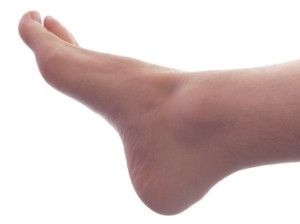 While the gym is a great place to get in shape and stay healthy, it can also be a place that harbors a number of fungi, viruses, and bacteria which can all cause skin infections. Athlete’s foot is a fungal infection that can thrive in places like gyms and locker rooms. Symptoms include redness, scaly skin, and itchiness. Over-the-counter topical creams can help treat it, but podiatrists can offer better treatments and care for chronic cases. Plantar warts are caused by human papillomavirus (HPV) and can lead to tough, callus-like spots on the foot. It's highly recommended to see a podiatrist who can monitor the infection and prescribe treatment options for this potentially painful condition. Impetigo is a very contagious bacterial infection that causes sores to develop on the skin, which eventually break open. MRSA is another bacterial infection which causes painful, reddish, and pus-filled bumps to develop on the skin. Again, it is highly recommended to see a podiatrist if either one has developed on the foot since they both require medical observation and treatment.
While the gym is a great place to get in shape and stay healthy, it can also be a place that harbors a number of fungi, viruses, and bacteria which can all cause skin infections. Athlete’s foot is a fungal infection that can thrive in places like gyms and locker rooms. Symptoms include redness, scaly skin, and itchiness. Over-the-counter topical creams can help treat it, but podiatrists can offer better treatments and care for chronic cases. Plantar warts are caused by human papillomavirus (HPV) and can lead to tough, callus-like spots on the foot. It's highly recommended to see a podiatrist who can monitor the infection and prescribe treatment options for this potentially painful condition. Impetigo is a very contagious bacterial infection that causes sores to develop on the skin, which eventually break open. MRSA is another bacterial infection which causes painful, reddish, and pus-filled bumps to develop on the skin. Again, it is highly recommended to see a podiatrist if either one has developed on the foot since they both require medical observation and treatment.
Everyday foot care is very important to prevent infection and other foot ailments. If you need your feet checked, contact Dr. Sharon Pletcher from Pennsylvania. Our doctor can provide the care you need to keep you pain-free and on your feet.
Everyday Foot Care
Often, people take care of their bodies, face and hair more so than they do for their feet. But the feet are a very important aspect of our bodies, and one that we should pay more attention to. Without our feet, we would not be able to perform most daily tasks.
It is best to check your feet regularly to make sure there are no new bruises or cuts that you may not have noticed before. For dry feet, moisturizer can easily be a remedy and can be applied as often as necessary to the affected areas. Wearing shoes that fit well can also help you maintain good foot health, as well as making it easier to walk and do daily activities without the stress or pain of ill-fitting shoes, high heels, or even flip flops. Wearing clean socks with closed shoes is important to ensure that sweat and bacteria do not accumulate within the shoe. Clean socks help to prevent Athlete’s foot, fungi problems, bad odors, and can absorb sweat.
If you have any questions please feel free to contact our office located in State College, PA. We offer the newest diagnostic and treatment technologies for all your foot and ankle needs.
Read more about Every Day Foot CareCeltics Forward Hayward Fractures Left Ankle
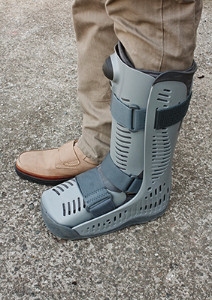 Tough break for Boston Celtics forward Gordon Hayward. Hayward badly fractured his left ankle during the Celtics and Cleveland Cavaliers game. He jumped up for a pass but collided with Lebron James and Jae Crowder. When he landed, his foot twisted and he collapsed. Hayward had signed a $128 million four year contract with the Celtics. The Celtics and Cavaliers game was his first time playing for the Celtics.
Tough break for Boston Celtics forward Gordon Hayward. Hayward badly fractured his left ankle during the Celtics and Cleveland Cavaliers game. He jumped up for a pass but collided with Lebron James and Jae Crowder. When he landed, his foot twisted and he collapsed. Hayward had signed a $128 million four year contract with the Celtics. The Celtics and Cavaliers game was his first time playing for the Celtics.
Sports related foot and ankle injuries require proper treatment before players can go back to their regular routines. For more information, contact Dr. Sharon Pletcher of Pennsylvania. Our doctor can provide the care you need to keep you pain-free and on your feet.
Sports Related Foot and Ankle Injuries
Foot and ankle injuries are a common occurrence when it comes to athletes of any sport. While many athletes dismiss the initial aches and pains, the truth is that ignoring potential foot and ankle injuries can lead to serious problems. As athletes continue to place pressure and strain the area further, a mild injury can turn into something as serious as a rupture and may lead to a permanent disability. There are many factors that contribute to sports related foot and ankle injuries, which include failure to warm up properly, not providing support or wearing bad footwear. Common injuries and conditions athletes face, including:
- Plantar Fasciitis
- Plantar Fasciosis
- Achilles Tendinitis
- Achilles Tendon Rupture
- Ankle Sprains
Sports related injuries are commonly treated using the RICE method. This includes rest, applying ice to the injured area, compression and elevating the ankle. More serious sprains and injuries may require surgery, which could include arthroscopic and reconstructive surgery. Rehabilitation and therapy may also be required in order to get any recovering athlete to become fully functional again. Any unusual aches and pains an athlete sustains must be evaluated by a licensed, reputable medical professional.
If you have any questions please feel free to contact our office located in State College, PA. We offer the newest diagnostic and treatment technologies for all your foot and ankle needs.
Read more about Sports Related Foot And Ankle InjuriesWhat is Tarsal Tunnel Syndrome?
 Tarsal tunnel syndrome is a condition in which the posterior tibial nerve in the tarsal tunnel becomes pinched or compressed. This causes a number of symptoms including burning and shooting pain, a pins and needles sensation, numbness, and tightness in the foot. There are several reasons why the nerve could become compressed, which include bony prominences, bone spurs, abnormal heel position, and the swelling of tendons in the tarsal tunnel. Due to the nature of tarsal tunnel syndrome, diagnosis may be difficult because it can seem to mimic the symptoms of other conditions; heel pain and arch pain are some examples. It is best to see a podiatrist if you are experiencing any of those symptoms. Podiatrists can offer a number of treatments, such as orthotics, taping or bracing, rest, icing, anti-inflammatory medication, or even surgery if other treatments do not improve your condition.
Tarsal tunnel syndrome is a condition in which the posterior tibial nerve in the tarsal tunnel becomes pinched or compressed. This causes a number of symptoms including burning and shooting pain, a pins and needles sensation, numbness, and tightness in the foot. There are several reasons why the nerve could become compressed, which include bony prominences, bone spurs, abnormal heel position, and the swelling of tendons in the tarsal tunnel. Due to the nature of tarsal tunnel syndrome, diagnosis may be difficult because it can seem to mimic the symptoms of other conditions; heel pain and arch pain are some examples. It is best to see a podiatrist if you are experiencing any of those symptoms. Podiatrists can offer a number of treatments, such as orthotics, taping or bracing, rest, icing, anti-inflammatory medication, or even surgery if other treatments do not improve your condition.
Tarsal tunnel syndrome can be very uncomfortable to live with. If you are experiencing tarsal tunnel syndrome, contact Dr. Sharon Pletcher of Pennsylvania. Our doctor can provide the care you need to keep you pain-free and on your feet.
Tarsal Tunnel Syndrome
Tarsal tunnel syndrome, which can also be called tibial nerve dysfunction, is an uncommon condition of misfiring peripheral nerves in the foot. The tibial nerve is the peripheral nerve in the leg responsible for sensation and movement of the foot and calf muscles. In tarsal tunnel syndrome, the tibial nerve is damaged, causing problems with movement and feeling in the foot of the affected leg.
Common Cause of Tarsal Tunnel Syndrome
- Involves pressure or an injury, direct pressure on the tibial nerve for an extended period of time, sometimes caused by other body structures close by or near the knee.
- Diseases that damage nerves, including diabetes, may cause tarsal tunnel syndrome.
- At times, tarsal tunnel syndrome can appear without an obvious cause in some cases.
The Effects of Tarsal Tunnel Syndrome
- Different sensations, an afflicted person may experience pain, tingling, burning or other unusual sensations in the foot of the affected leg.
- The foot muscles, toes and ankle become weaker, and curling your toes or flexing your foot can become difficult.
- If condition worsens, infections and ulcers may develop on the foot that is experiencing the syndrome.
A physical exam of the leg can help identify the presence of tarsal tunnel syndrome. Medical tests, such as a nerve biopsy, are also used to diagnose the condition. Patients may receive physical therapy and prescriptive medication. In extreme cases, some may require surgery.
If you have any questions please feel free to contact our office located in State College, PA. We offer the newest diagnostic and treatment technologies for all your foot and ankle needs.
Read more about Tarsal Tunnel SyndromeWhat to Know About Achilles Tendon Injuries
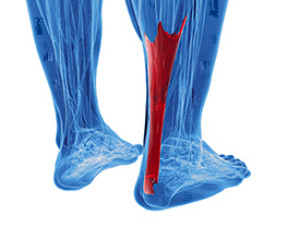 The Achilles tendon, while the largest and thickest tendon in the body, is prone to being injured just like any body part. Tendinopathy, the breakdown of the tendon, generally occurs from overuse—especially from athletic activities. In some cases, the tendon can even rupture completely. While overuse directly causes the injury, there are other factors that increase the risk. These factors include bending the foot backwards, or dorsiflexion, weak calf muscles, and pronation. Compared to other muscle recoveries, tendons take longer to heal and can even take up to a year to fully recover. While anti-inflammatory medication may bring relief, it will not heal the injury. Ultimately, the best thing to do for an Achilles tendon injury is to see a podiatrist. Podiatrists offer the best treatment options and recovery programs for such injuries, and they can help patients heal properly so they can get back in the game.
The Achilles tendon, while the largest and thickest tendon in the body, is prone to being injured just like any body part. Tendinopathy, the breakdown of the tendon, generally occurs from overuse—especially from athletic activities. In some cases, the tendon can even rupture completely. While overuse directly causes the injury, there are other factors that increase the risk. These factors include bending the foot backwards, or dorsiflexion, weak calf muscles, and pronation. Compared to other muscle recoveries, tendons take longer to heal and can even take up to a year to fully recover. While anti-inflammatory medication may bring relief, it will not heal the injury. Ultimately, the best thing to do for an Achilles tendon injury is to see a podiatrist. Podiatrists offer the best treatment options and recovery programs for such injuries, and they can help patients heal properly so they can get back in the game.
Achilles tendon injuries need immediate attention to avoid future complications. If you have any concerns, contact Dr. Sharon Pletcher of Pennsylvania. Our doctor can provide the care you need to keep you pain-free and on your feet.
What Is the Achilles Tendon?
The Achilles tendon is a tendon that connects the lower leg muscles and calf to the heel of the foot. It is the strongest tendon in the human body and is essential for making movement possible. Because this tendon is such an integral part of the body, any injuries to it can create immense difficulties and should immediately be presented to a doctor.
What Are the symptoms of an Achilles Tendon Injury?
There are various types of injuries that can affect the Achilles tendon. The two most common injuries are Achilles tendinitis and ruptures of the tendon.
Achilles Tendinitis Symptoms
- Inflammation
- Dull to severe pain
- Increased blood flow to the tendon
- Thickening of the tendon
Rupture Symptoms
- Extreme pain and swelling in the foot
- Total immobility
Treatment and Prevention
Achilles tendon injuries are diagnosed by a thorough physical evaluation, which can include an MRI. Treatment involves rest, physical therapy, and in some cases, surgery. However, various preventative measures can be taken to avoid these injuries, such as:
- Thorough stretching of the tendon before and after exercise
- Strengthening exercises like calf raises, squats, leg curls, leg extensions, leg raises, lunges, and leg presses
If you have any questions please feel free to contact our office located in State College, PA. We offer the newest diagnostic tools and technology to treat your foot and ankle needs.
Read more about What are Achilles Tendon InjuriesShould You Wear High Heels if Pregnant?
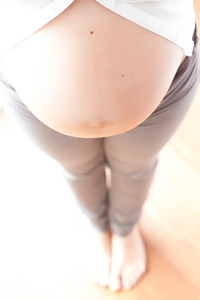 While high heels are considered to be fashionable by a number of people, they present a number of health issues to women’s feet. High heels can cause bunions, hammertoes, foot pain, and more. They can also be difficult to walk in and potentially cause women to fall. That said, should women wear high heels while pregnant? The additional weight of the baby can throw off a woman’s balance when walking in high heels. While the womb is well protected with thick walls and fluid that acts as a cushion, a fall can happen anywhere and can be very serious. The later a woman is in pregnancy, the more likely a fall has the potential to put a woman into labor. It is advised to avoid high heels during the later stages of pregnancy and to take caution during early pregnancy. It’s also good to consult a podiatrist whether high heels are right for you if you’re pregnant.
While high heels are considered to be fashionable by a number of people, they present a number of health issues to women’s feet. High heels can cause bunions, hammertoes, foot pain, and more. They can also be difficult to walk in and potentially cause women to fall. That said, should women wear high heels while pregnant? The additional weight of the baby can throw off a woman’s balance when walking in high heels. While the womb is well protected with thick walls and fluid that acts as a cushion, a fall can happen anywhere and can be very serious. The later a woman is in pregnancy, the more likely a fall has the potential to put a woman into labor. It is advised to avoid high heels during the later stages of pregnancy and to take caution during early pregnancy. It’s also good to consult a podiatrist whether high heels are right for you if you’re pregnant.
Pregnant women with swollen feet can be treated with a variety of different methods that are readily available. For more information about other cures for swollen feet during pregnancy, consult with Dr. Sharon Pletcher from Pennsylvania. Our doctor will attend to all of your foot and ankle needs.
What Foot Problems Can Arise During Pregnancy?
One problem that can occur is overpronation, which occurs when the arch of the foot flattens and tends to roll inward. This can cause pain and discomfort in your heels while you’re walking or even just standing up, trying to support your baby.
Another problem is edema, or swelling in the extremities. This often affects the feet during pregnancy but tends to occur in the later stages.
How Can I Keep My Feet Healthy During Pregnancy?
- Wearing orthotics can provide extra support for the feet and help distribute weight evenly
- Minimize the amount of time spent walking barefoot
- Wear shoes with good arch support
- Wear shoes that allow for good circulation to the feet
- Elevate feet if you experience swelling
- Massage your feet
- Get regular, light exercise, such as walking, to promote blood circulation to the feet
If you have any questions please feel free to contact our office located in State College, PA. We offer the newest diagnostic and treatment technologies for all your foot and ankle needs.
Read more about Pregnancy and Foot HealthWhat Do Podiatrists Do?
 Podiatrists are medical doctors who specialize in the foot and ankle. Officially known as a Doctor of Podiatric Medicine (DPM), podiatrists have the knowledge and ability to diagnose and treat any foot ailment. This includes minor ones such as toenail fungus, cracked heels, and heel pain, to more major problems such as an Achilles tendon rupture or a broken foot. They can also provide items such as custom-made orthotics to help give your feet proper support and keep them aligned. For those with diabetes, it is highly recommended to see a podiatrist. Diabetics generally have reduced blood flow and neuropathy in the foot, which in their worst cases can lead to infected ulcers and an increased risk of amputation. If you are experiencing any pain or have any foot abnormalities, it is important to see a podiatrist.
Podiatrists are medical doctors who specialize in the foot and ankle. Officially known as a Doctor of Podiatric Medicine (DPM), podiatrists have the knowledge and ability to diagnose and treat any foot ailment. This includes minor ones such as toenail fungus, cracked heels, and heel pain, to more major problems such as an Achilles tendon rupture or a broken foot. They can also provide items such as custom-made orthotics to help give your feet proper support and keep them aligned. For those with diabetes, it is highly recommended to see a podiatrist. Diabetics generally have reduced blood flow and neuropathy in the foot, which in their worst cases can lead to infected ulcers and an increased risk of amputation. If you are experiencing any pain or have any foot abnormalities, it is important to see a podiatrist.
If you are experiencing pain in the feet or ankles, don’t join the stubborn majority refusing treatment. Feel free to contact Dr. Sharon Pletcher from Pennsylvania. Our doctor can provide the care you need to keep you pain-free and on your feet.
What Is a Podiatrist?
Someone would seek the care of a podiatrist if they have suffered a foot injury or have common foot ailments such as heal spurs, bunions, arch problems, deformities, ingrown toenails, corns, foot and ankle problems, etc.
Podiatric Treatment
A podiatrist will treat the problematic areas of the feet, ankle or lower leg by prescribing the following:
- Physical therapy
- Drugs
- Orthotic inserts or soles
- Surgery on lower extremity fractures
A common podiatric procedure a podiatrist will use is a scanner or force plate which will allow the podiatrist to know the designs of orthotics. Patients are then told to follow a series of tasks to complete the treatment. The computer will scan the foot a see which areas show weight distribution and pressure points. The podiatrist will read the analysis and then determine which treatment plans are available.
If you have any questions please feel free to contact our office located in State College, PA. We offer the newest diagnostic and treatment technologies for all your foot and ankle needs.
Read more about What is a Podiatrist?More...
Avoiding Running Injuries
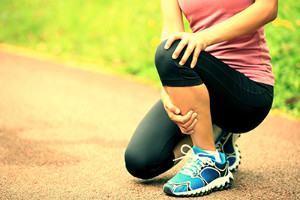 Avoiding injuries when running is important and can make your running experience more enjoyable. For new runners, start slowly and avoid pushing yourself too hard; the key is to gradually build yourself up. Before and after a run, stretch to loosen muscles and prevent strain. Strength training can also build muscle and durability; just be sure to rest one day before running or training again. A sign that you may be pushing yourself too much is if you cannot talk in complete sentences when running; if so, you may want to slow down. Keeping a good diet to replace lost calories and vitamins, hydrating plenty, and getting enough sleep will keep your body from quickly getting fatigued. If you do feel pain, stop running. If the pain resides in your feet, take it easy and rest. If the pain doesn’t go away, you may want to see a podiatrist for a diagnosis.
Avoiding injuries when running is important and can make your running experience more enjoyable. For new runners, start slowly and avoid pushing yourself too hard; the key is to gradually build yourself up. Before and after a run, stretch to loosen muscles and prevent strain. Strength training can also build muscle and durability; just be sure to rest one day before running or training again. A sign that you may be pushing yourself too much is if you cannot talk in complete sentences when running; if so, you may want to slow down. Keeping a good diet to replace lost calories and vitamins, hydrating plenty, and getting enough sleep will keep your body from quickly getting fatigued. If you do feel pain, stop running. If the pain resides in your feet, take it easy and rest. If the pain doesn’t go away, you may want to see a podiatrist for a diagnosis.
Exercising your feet regularly with the proper foot wear is a great way to prevent injuries. If you have any concerns about your feet, contact Dr. Sharon Pletcher of Pennsylvania. Our doctor will treat your foot and ankle needs.
How to Prevent Running Injuries
Many common running injuries are caused by overuse and overtraining. When the back of the kneecap starts wearing out and starts causing pain in your knee, this is commonly referred to as runner’s knee. Runner’s knee is a decrease in strength in your quadriceps and can occur if you’re not wearing properly fitted or supporting shoes. To prevent runner’s knee, focusing on hip strengthening is a good idea, as well as strengthening your quads to keep the kneecaps aligned.
What Are Some Causes of Running Injuries?
- One cause of a common running injury is called iliotibial band syndrome.
- Plantar fasciitis is also another common injury.
- Stress fractures can occur from overtraining, lack of calcium, or even your running style.
Best Ways to Prevent Running Injuries
- Wear footwear that fits properly and suits your running needs.
- Running shoes are the only protective gear that runners have to safeguard them from injury.
- Make a training schedule. Adding strengthening exercises as well as regular stretching can help keep you strong and limber and can lessen the possibility of injuries.
- Stretching keeps muscles limber; this will help you gain better flexibility.
If you have any questions please feel free to contact our office located in State College, PA. We offer the newest diagnostic and treatment technologies for all your foot and ankle needs.
Read more about How to Prevent Running InjuriesHouston Texans Backup RB Suffers Ankle Sprain
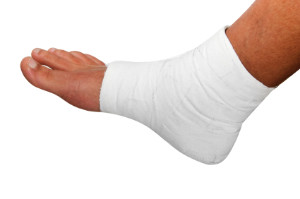 Backup running back Alfred Blue of the Houston Texans recently sustained a high-ankle sprain. Blue was injured during a practice between the Texans and New Orleans Saints. He is expected to be out for the rest of the preseason; however he should be back for most, if not all, of the main season. While he is a backup to starter Lamar Miller, Blue is considered a good player and has scored five touchdowns and rushed 1,646 yards over three seasons.
Backup running back Alfred Blue of the Houston Texans recently sustained a high-ankle sprain. Blue was injured during a practice between the Texans and New Orleans Saints. He is expected to be out for the rest of the preseason; however he should be back for most, if not all, of the main season. While he is a backup to starter Lamar Miller, Blue is considered a good player and has scored five touchdowns and rushed 1,646 yards over three seasons.
Sports related foot and ankle injuries require proper treatment before players can go back to their regular routines. For more information, contact Dr. Sharon Pletcher of Pennsylvania. Our doctor can provide the care you need to keep you pain-free and on your feet.
Sports Related Foot and Ankle Injuries
Foot and ankle injuries are a common occurrence when it comes to athletes of any sport. While many athletes dismiss the initial aches and pains, the truth is that ignoring potential foot and ankle injuries can lead to serious problems. As athletes continue to place pressure and strain the area further, a mild injury can turn into something as serious as a rupture and may lead to a permanent disability. There are many factors that contribute to sports related foot and ankle injuries, which include failure to warm up properly, not providing support or wearing bad footwear. Common injuries and conditions athletes face, including:
- Plantar Fasciitis
- Plantar Fasciosis
- Achilles Tendinitis
- Achilles Tendon Rupture
- Ankle Sprains
Sports related injuries are commonly treated using the RICE method. This includes rest, applying ice to the injured area, compression and elevating the ankle. More serious sprains and injuries may require surgery, which could include arthroscopic and reconstructive surgery. Rehabilitation and therapy may also be required in order to get any recovering athlete to become fully functional again. Any unusual aches and pains an athlete sustains must be evaluated by a licensed, reputable medical professional.
If you have any questions please feel free to contact our office located in State College, PA. We offer the newest diagnostic and treatment technologies for all your foot and ankle needs.
Read more about Sports Related Foot And Ankle InjuriesPicking the Right Footwear for Children
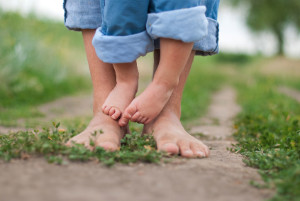 When it comes to picking the right shoes, children are much more different than adults. Children’s feet are still growing and developing compared to adult feet. With this in mind, it is important for parents to make sure that their children’s shoes properly fit them. If your child is having a growth spurt, they can quickly outgrow the shoes they wear even if they are relatively new. Children’s shoes should be flexible and have enough space for their toes to move around. They also need to provide good foot support and cushion for comfort. Shoes should be comfortable even after wearing them for hours. Finally, knowing when to wear the right shoe is vital. Sandals or flip-flops are fine for the beach but not for wearing all day. If your child plays sports, they need high performance shoes that can handle the stress. Parents should routinely check their children’s shoes to make sure they properly fit.
When it comes to picking the right shoes, children are much more different than adults. Children’s feet are still growing and developing compared to adult feet. With this in mind, it is important for parents to make sure that their children’s shoes properly fit them. If your child is having a growth spurt, they can quickly outgrow the shoes they wear even if they are relatively new. Children’s shoes should be flexible and have enough space for their toes to move around. They also need to provide good foot support and cushion for comfort. Shoes should be comfortable even after wearing them for hours. Finally, knowing when to wear the right shoe is vital. Sandals or flip-flops are fine for the beach but not for wearing all day. If your child plays sports, they need high performance shoes that can handle the stress. Parents should routinely check their children’s shoes to make sure they properly fit.
Making sure that your children maintain good foot health is very important as they grow. If you have any questions, contact Dr. Sharon Pletcher of Pennsylvania. Our doctor can provide the care you need to keep you pain-free and on your feet.
Keeping Children's Feet Healthy
Having healthy feet during childhood can help prevent medical problems later in life, namely in the back and legs. As children grow, their feet require different types of care. Here are some things to consider...
Although babies do not walk yet, it is still very important to take care of their feet.
Avoid putting tight shoes or socks on his or her feet.
Allow the baby to stretch and kick his or her feet to feel comfortable.
As a toddler, kids are now on the move and begin to develop differently. At this age, toddlers are getting a feel for walking, so don’t be alarmed if your toddler is unsteady or ‘walks funny’.
As your child gets older, it is important to teach them how to take care of their feet.
Show them proper hygiene to prevent infections such as fungus.
Be watchful for any pain or injury.
Have all injuries checked by a doctor as soon as possible.
Comfortable, protective shoes should always be worn, especially at play.
If you have any questions please feel free to contact our office located in State College, PA. We offer the newest diagnostic and treatment technologies for all your foot and ankle needs.
Read more about What to Do to Keep Your Child’s Feet HealthySever’s Disease and Your Child
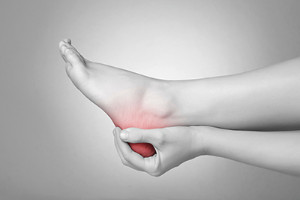 Sever’s disease is a common injury among children, especially during the growth spurts of early puberty. A painful disorder, Sever’s disease is caused when the heel bone outgrows the tendons and muscles; this causes them to become strained. This in turn puts pressure on the growth plate in the heel, which causes swelling and pain. Stress from physical activities can also cause injury. Symptoms of Sever’s disease include swelling, redness, discomfort, pain, and difficulty walking. Podiatrists can diagnose Sever’s disease based on symptoms, examination of the heel, or by squeezing the heel. To treat it, podiatrists will prescribe rest, anti-inflammatory and pain medication, and a foot exercise regimen to strengthen the foot. In some cases, a cast may be necessary to immobilize the foot. Fortunately, Sever’s disease heals quickly. Just be sure to bring your child to a podiatrist if they report pain or swelling in their foot.
Sever’s disease is a common injury among children, especially during the growth spurts of early puberty. A painful disorder, Sever’s disease is caused when the heel bone outgrows the tendons and muscles; this causes them to become strained. This in turn puts pressure on the growth plate in the heel, which causes swelling and pain. Stress from physical activities can also cause injury. Symptoms of Sever’s disease include swelling, redness, discomfort, pain, and difficulty walking. Podiatrists can diagnose Sever’s disease based on symptoms, examination of the heel, or by squeezing the heel. To treat it, podiatrists will prescribe rest, anti-inflammatory and pain medication, and a foot exercise regimen to strengthen the foot. In some cases, a cast may be necessary to immobilize the foot. Fortunately, Sever’s disease heals quickly. Just be sure to bring your child to a podiatrist if they report pain or swelling in their foot.
Sever's disease often occurs in children and teens. If your child is experiencing foot or ankle pain, see Dr. Sharon Pletcher at Pennsylvania. Our doctor can treat your child’s foot and ankle needs.
Sever’s Disease
Sever’s disease is also known as calcaneal apophysitis, which is a medical condition that causes heel pain I none or both feet. The disease is known to affect children between the ages of 8 and 14.
Sever’s disease occurs when part of the child’s heel known as the growth plate (calcaneal epiphysis) is attached to the Achilles tendon. This area can suffer injury when the muscles and tendons of the growing foot do not keep pace with bone growth. Therefore, the constant pain which one experiences at the back of the heel will make the child unable to put any weight on the heel. The child is then forced to walk on their toes.
Symptoms
Acute pain – Pain associated with Sever’s disease is usually felt in the heel when the child engages in physical activity such as walking, jumping and or running.
Highly active – Children who are very active are among the most susceptible in experiencing Sever’s disease, because of the stress and tension placed on their feet.
If you have any questions, please feel free to contact our office located in State College, PA. We offer the newest diagnostic and treatment technologies for all your foot and ankle injuries.
Read more about Sever's Disease



